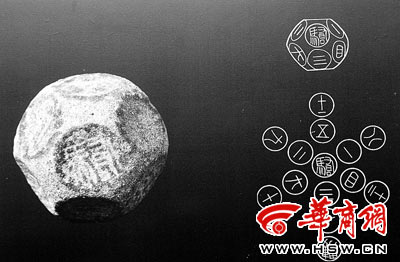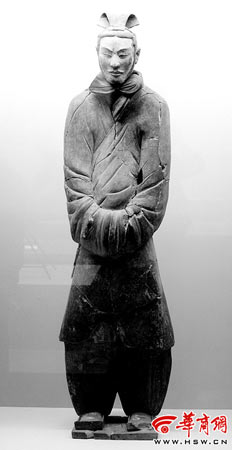New terracotta warriors museum relics on display
 |
|
A 14-sided game dice. |
About 17 subordinate tombs, mostly of princes and princesses, were also discovered there. Once Hu Hai, the successor of Emperor Qin Shihuang, ascended the throne, he killed the young princes and princesses one after another. The discovery of the 17 tombs could provide evidence for the murder cases 2000 years ago. Only a small part of the tombs have been excavated so far. A silver toad and royal seal are among the most precious relics found.
Eight standing pottery figures with long crowns and lowered heads were unearthed at pit #K0006. Knives and scythe stones were hung at their waists to record the king's commanding. Unlike the previous military officers, these could be civil officials. Some also named them judicial officials. One of the eight sculptures that are featured in the exhibition is standing with his hands crossed inside his long sleeves.
 |
|
This pottery figure is obviously not a warrior. He could be a civil official. |
According to Wang, the main hall of the Mausoleum provided accommodation for Emperor Qin Shihuang and the side halls were mainly used for entertainment. The "Shiboqiong", quite like a modern dice used in board games, was excavated in a side hall. It could be used by the Emperor for playing games. The "Shiboqiong" has 14 sides – 12 sides are labeled with an Arab numeral and two sides are labeled with Chinese characters. Experts guess that "Shiboqiong" may be the origin of dice, but how it was used to play games remains a secret.
 0
0 







Comments